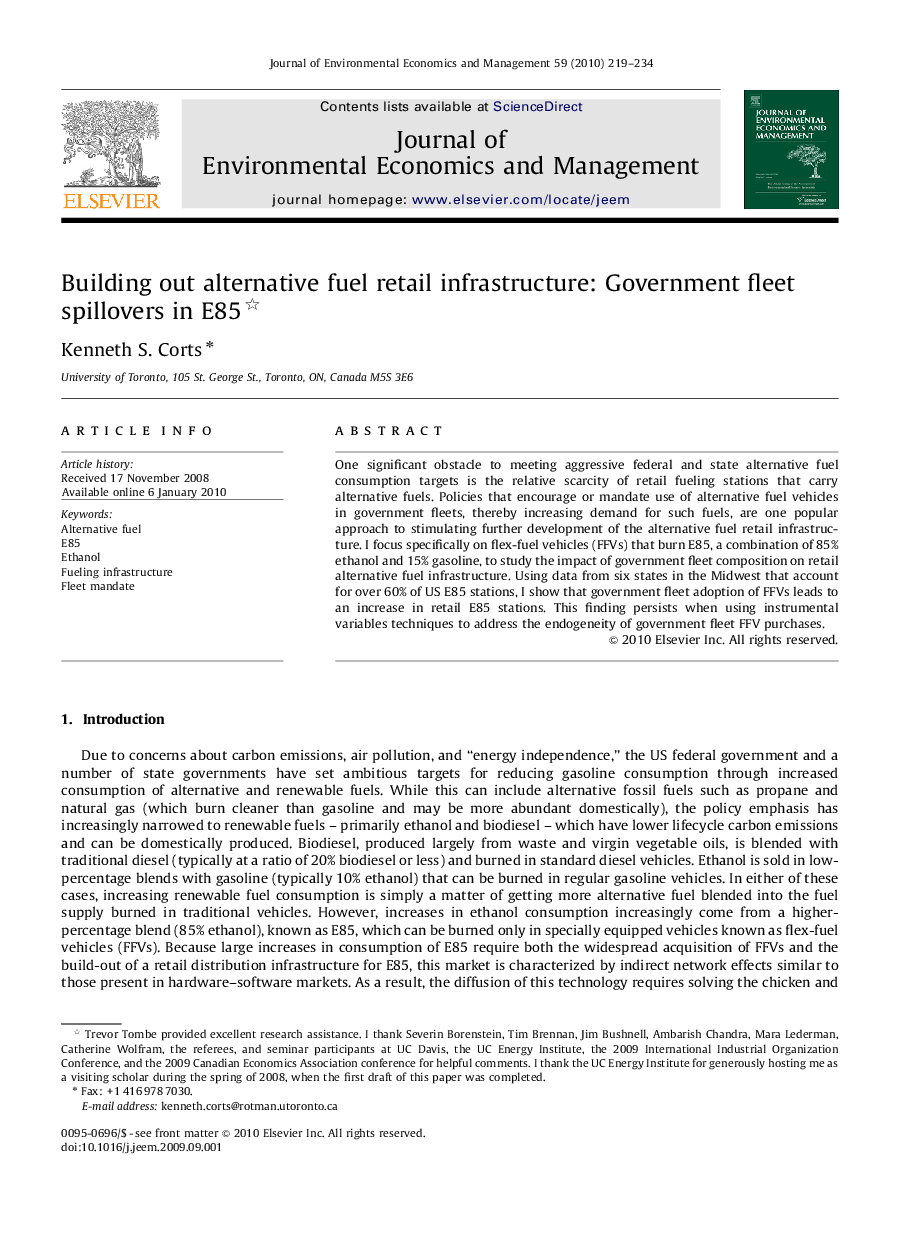| Article ID | Journal | Published Year | Pages | File Type |
|---|---|---|---|---|
| 958852 | Journal of Environmental Economics and Management | 2010 | 16 Pages |
Abstract
One significant obstacle to meeting aggressive federal and state alternative fuel consumption targets is the relative scarcity of retail fueling stations that carry alternative fuels. Policies that encourage or mandate use of alternative fuel vehicles in government fleets, thereby increasing demand for such fuels, are one popular approach to stimulating further development of the alternative fuel retail infrastructure. I focus specifically on flex-fuel vehicles (FFVs) that burn E85, a combination of 85% ethanol and 15% gasoline, to study the impact of government fleet composition on retail alternative fuel infrastructure. Using data from six states in the Midwest that account for over 60% of US E85 stations, I show that government fleet adoption of FFVs leads to an increase in retail E85 stations. This finding persists when using instrumental variables techniques to address the endogeneity of government fleet FFV purchases.
Keywords
Related Topics
Social Sciences and Humanities
Economics, Econometrics and Finance
Economics and Econometrics
Authors
Kenneth S. Corts,
